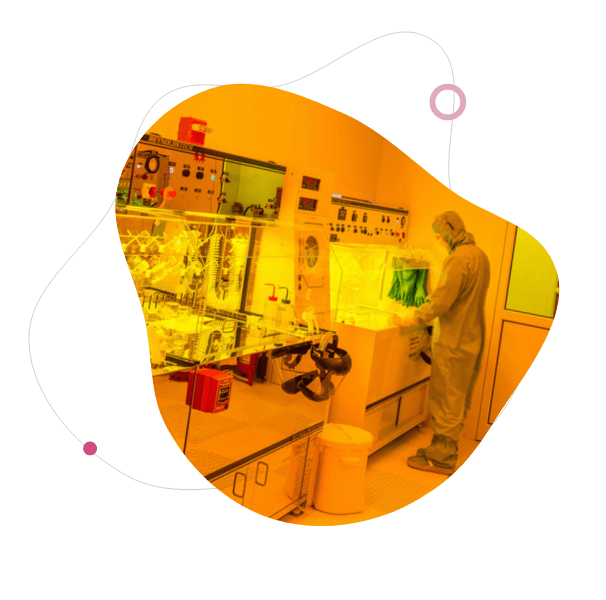In tomorrow’s technology, seeing is everything.
Although most people are impressed by what smartphone cameras can see these days, developing much faster and ultra-sensitive light detectors will have applications in everything from self-driving cars and 3D scans of landscapes to the development of quantum communications and a quantum internet.
A collaboration between the University of Waterloo and Sherbrooke University is helping to bring that technology to fruition.
This project involves the research teams of Serge Charlebois and Jean-Francois Pratte of Université de Sherbrooke and Thomas Jennewein, a faculty member in the Department of Physics and Astronomy and the Institute for Quantum Computing at the University of Waterloo.
Together they are improving and developing new applications for a single-photon avalanche diode (SPAD) image sensor array that was designed at the Sherbrooke labs.
The project is part of the Quantum Colaboratory (Quantum Colab) a research and development environment that involves the quantum research facilities at three universities — Sherbrooke’s Institut Quantique, the Stewart Blusson Quantum Matter Institute at the University of British Columbia and the Transformative Quantum Technologies (TQT) technology vector research initiative of the Institute for Quantum Computing at the University of Waterloo.
The three institutions and their industry partners are working together to bring quantum technologies to life.
The Sherbrooke and Waterloo project is an example of the power of collaboration in today’s quantum research.
The Sherbrooke team works with SPAD image sensor technology that is so sensitive, it can detect one particle of light or photon at a time and know precisely where and when that particle hit the sensor. But to make it useful in a number of different applications, researchers hope to squeeze many more pixels (or picture elements) onto these sensors and still be able to get a very clear picture. They also want to do that while achieving an extremely fast time resolution, down to the order of a picosecond (a trillionth of a second) to enable much faster information processing on a single chip.
The team at the University of Waterloo is doing the optical testing of the equipment and providing feedback in order to improve it. It is also working to combine the SPAD technology with the quantum receiver technology that Jennewein’s team at Waterloo has expertise in.
“If we can make these sensors really fast, and also get good spatial resolution, there would be many applications, in sensing, imaging, ranging and quantum communications,” says Shihan Sajeed, who currently works for the Department of National Defense but was a postdoctoral researcher in Jennewein’s group and is now a visiting researcher at the University of Waterloo.
“At Waterloo, we’re good at the quantum part of it. At Sherbrooke, they’re good at the detector side and the electronic circuit side,” adds Ramy Tannous, a PhD student in Jennewein’s group. “They’re pushing the boundary to make this technology really fast, and we are helping to test it and find out if it is fast enough for these various applications.”
One of the advantages of this technology is being able to process a lot more image information on the same chip, “so you don’t need to store gigabytes of data,” Tannous adds.
A critical part of a quantum computing enabled world will involve being able to create a secure quantum internet with satellites that can receive the photons, and quickly and precisely translate the information about those particles of light into zeros and ones for quantum communication.
Usually, the horizonal or vertical polarization of the photon determines whether it is a zero or a one. But polarization encoding is prone to errors when the signals are reflected off of a surface such as a wall or distant target. That’s where the SPAD sensor technology from Sherbrooke can help. Since the SPAD sensors have very precise timing resolution in knowing the exact time window that a particle of light arrived, it might be possible to use time-bin encoding in place of the polarization encoding to reduce the errors in a sensing or imaging application.
By combining the free-space quantum receiver expertise of the Waterloo researchers with the detector array technology developed at Sherbrooke, achieving state-of-the-art performance in quantum signal receiver technology becomes possible.
But these high-speed image sensors also have many other applications. A self driving car, for example, needs to “see” its environment, even while travelling at high speeds on a dark road at night. Archaeologists are wanting to generate 3D maps of landscapes to locate ancient features like roads and buildings that are hidden in the landscape. Imaging sensor technologies are also useful in defence and the exploration of other planets. Microscopy, medical imaging and virtual reality are among other applications.
Sajeed says the Sherbrooke researchers rose to the challenge of creating an intelligent electronic design that packs together many more pixels on the same sensor while still being able to detect the signal charge from the photons.
Now, the task is to improve the design, Sajeed says. That’s where the testing at Waterloo comes in. “We shine light into it, we try to see how fast it is, how precise it is, and find out what the jitter (the consistency of the time resolution) is.” “They are going to make improvements based on our feedback,” Tannous says. “It is exciting to be part of developing emerging technologies, especially since we are doing this with collaborators here in Canada,” he adds.
